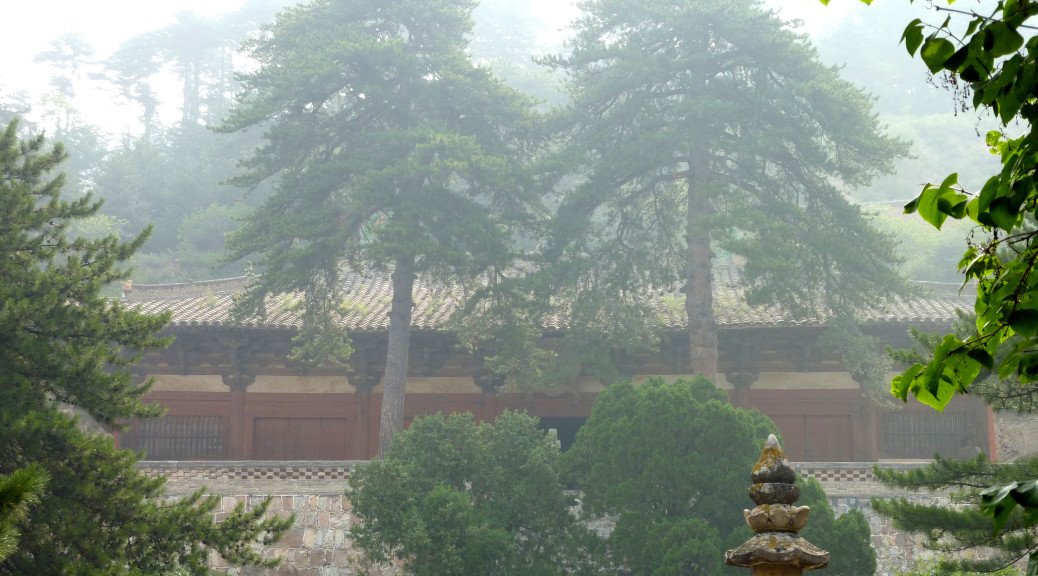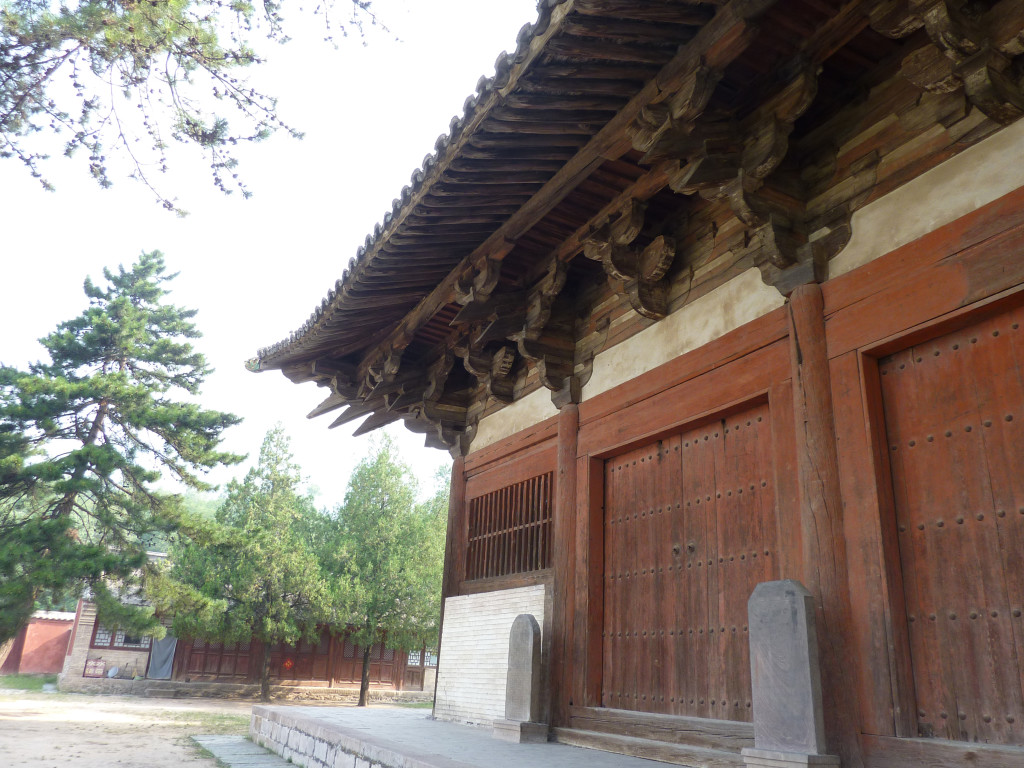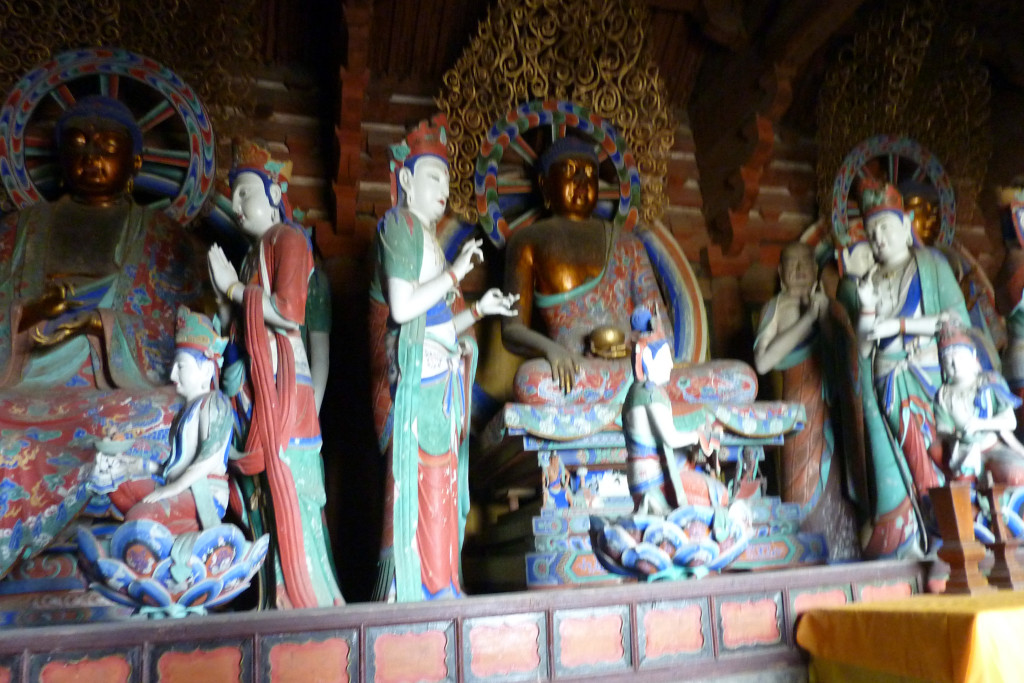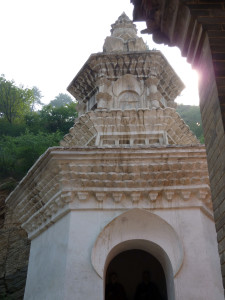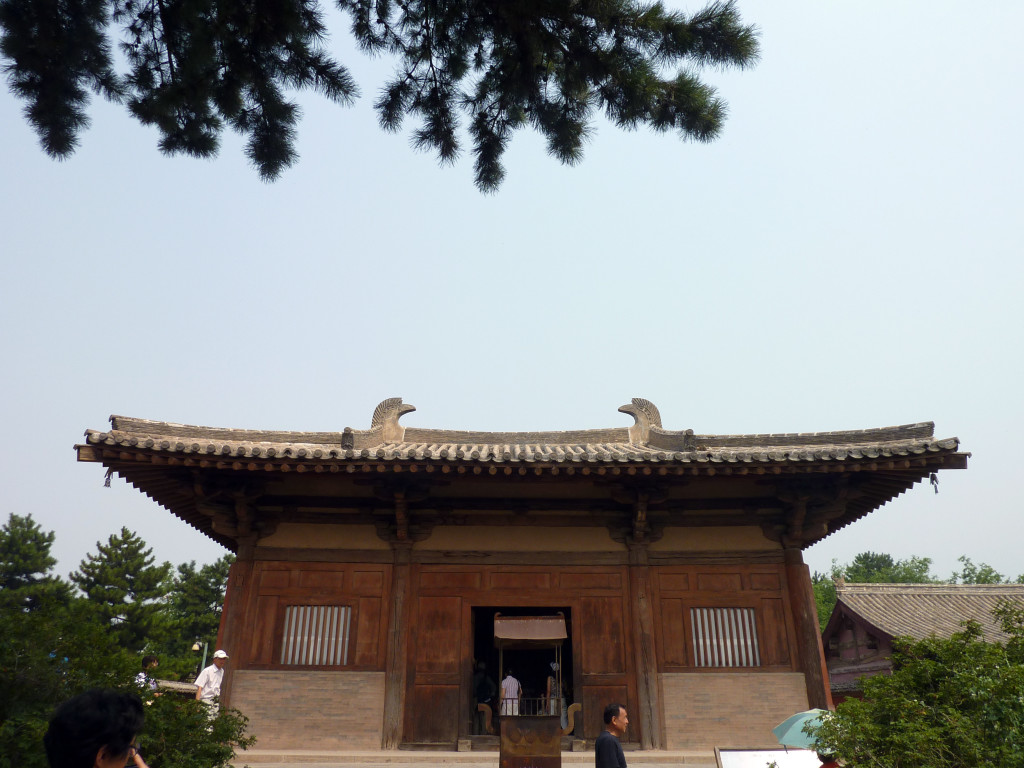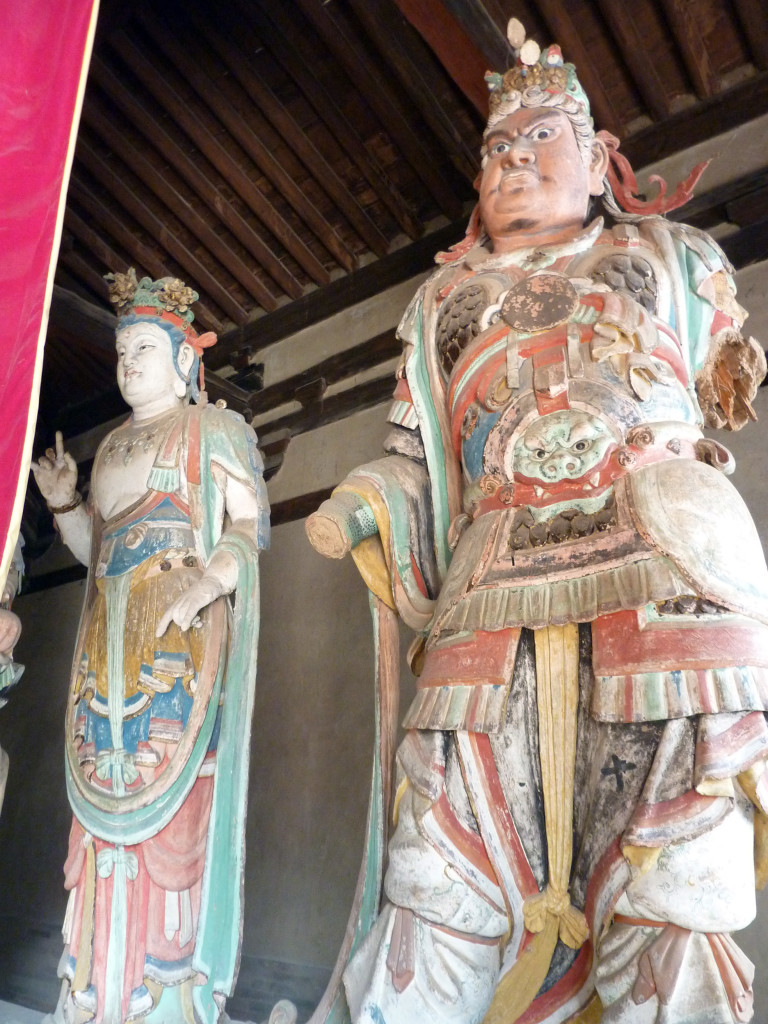Shanxi has some of the oldest and most well-known temples and monasteries in China. Wutaishan (五台山), especially, is a sacred site. It is often considered the first among the four sacred mountains in Chinese Buddhism, each of which is revered as the bodhimanda (道場 ) of one of the four great bodhisattvas.
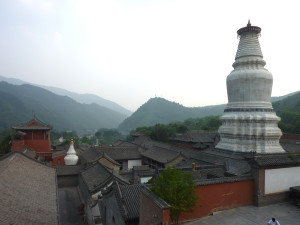 Wutaishan is the home of the Bodhisattva of wisdom, Manjusri (文殊). Pilgrimages from India and other Asian countries to Wutaishan have been recored as early as the 7th century. The bodhisattva is believed to frequently appear on the mountain, taking the form of ordinary pilgrims, monks, or most often unusual five-colored clouds. Wutaishan is host to over 53 sacred monasteries, and was inscribed as a UNESCO Owrld Heritage Site in 2009.
Wutaishan is the home of the Bodhisattva of wisdom, Manjusri (文殊). Pilgrimages from India and other Asian countries to Wutaishan have been recored as early as the 7th century. The bodhisattva is believed to frequently appear on the mountain, taking the form of ordinary pilgrims, monks, or most often unusual five-colored clouds. Wutaishan is host to over 53 sacred monasteries, and was inscribed as a UNESCO Owrld Heritage Site in 2009.
The mountain is also important for another reason: two of the only four remaining temples from the Tang Dynasty, among the oldest wooden structures in China, are located at it foot.
Foguang Temple 佛光寺
The Great East Hall was built in 857AD during the latter part of the Tang Dynasty (618-907AD). It is among the oldest preserved wooden structure in China and was rediscovered by the renowned architectural historian husband-and-wife team: Liang Sicheng (梁思成 1901–1972) and Lin Huiyin (林徽音1904-1955) in 1937.
Foguang in Chinese means the light of the Buddha. According to legend, Xiaowen Emperor (471-499AD) of Northern Wei saw the light of the Buddha on the site and commanded that a majestic temple be built on the spot. The original temple was unfortunately destroyed in the 845 when Emperor Wuchong of the Tang Dynasty launched a campaign against Buddhism.
The Great East Hall exemplifies the best of Tang architecture. It is a single storey structure atop a large stone platform, impressive by the breadth of its front and the protrusion of its eaves. The hall measures seven bays by four or 34 by 17.7 metres (110 by 58 ft), and is supported by inner and outer sets of columns.
On top of each column is a complicated set of brackets containing seven different bracket types that are one-third as high as the column itself. Supporting the roof of the hall, each of the bracket sets are connected by crescent shaped crossbeams, which create an inner ring above the inner set of columns and an outer ring above the outer columns.
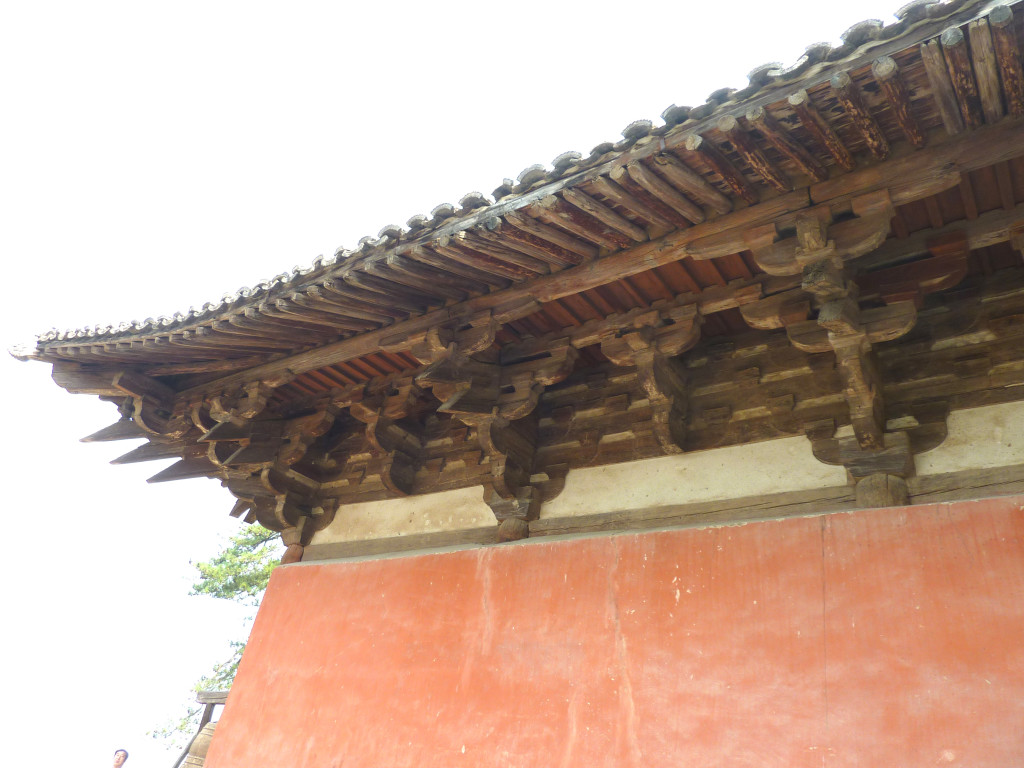 The extremely complex bracket sets are testament to the Great East Hall’s importance as a structure during the Tang Dynasty.According the 11th-century architectural treatise, Yingzao Fashi (营造法式), the Great East Hall closely corresponds to a seventh rank building in a system of eight ranks. The high rank of the Great East Hall indicates that it was an important building, and no other buildings from the period with such a high rank has survived.
The extremely complex bracket sets are testament to the Great East Hall’s importance as a structure during the Tang Dynasty.According the 11th-century architectural treatise, Yingzao Fashi (营造法式), the Great East Hall closely corresponds to a seventh rank building in a system of eight ranks. The high rank of the Great East Hall indicates that it was an important building, and no other buildings from the period with such a high rank has survived.
The hall holds the “three supremes” of Tang art: statues, murals and calligraphy. The statues, though painted over in later years, are amongst the finest.
South of the Great East Hall is a funerary pagoda Zushi Pagoda (祖师塔), estimated to be built during the Northern Wei Dynasty (386-534AD) or Northern Qi Dynasty (550-577 AD), the second oldest pagoda in China and possibly containing the tomb of the founder of the Foguang Temple.
Nanchan Temple 南禅寺
The original construction time of Nanchan Temple is unknown. It was rebuilt in 782AD of the Tang Dynasty and Its main hall is the earliest preserved wooden-structured building nationwide.
The sculptures in the main hall are masterpieces, and give us a glimpse into the high level of artistic achievements of the Tang Dynasty.
The Bodhisattva Manjusri riding a lion
At the center of the hall, Sakyamuni (Buddha) sitting crossed-legged in Sumeru (the central world-mountain in Buddhist cosmology.
